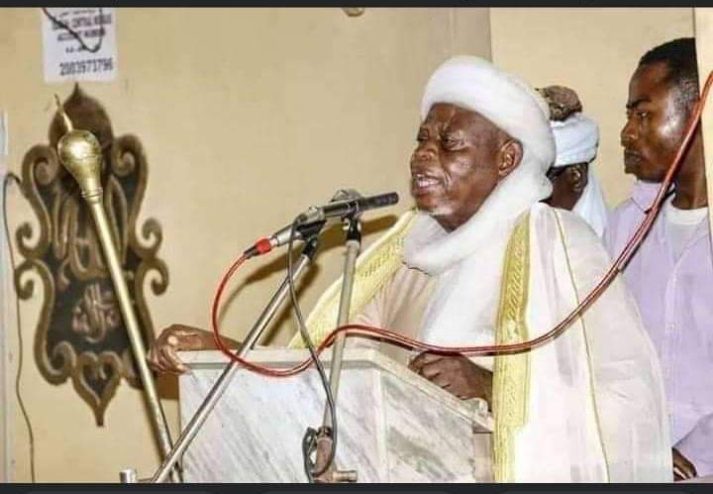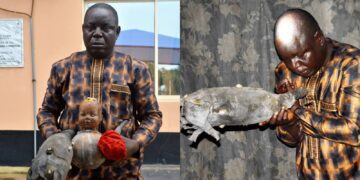The Chief Imam of Ibadanland, Sheikh Abdul Ganiyy Abubakri Agbotomokekere on Wednesday led some Muslim faithfuls in the yearly Eid – Fitri prayer at the Ibadan Central Eid praying ground, Agodi.
In attendance are the Deputy Governor of Oyo State, Engr. Rauf Olaniyan, the Olubadan of Ibadanland, Oba Saliu Akanmu Adetunji and some other dignitaries at the prayer ground.
According to calculation, Imam Agbotomokekere’s led Eid prayer in Ibadan counted the Islamic 9th month of Ramadan to Day 29 and proceed to the 1st day of Shawwal.
This is contradictory to the directive from the National Supreme Council for Islamic Affairs(NSCIA) chaired by the Sultan of Sokoto, Alhaji Muhammad Sa’ad Abubakar CFR that fasting should continue on Wednesday as a result of the non-sighting of the Shawal moon by authorities on Tuesday night.
The Sultan’s directive goes inline with that of the Saudi Arabia, Indonesia, Qatar’s and other Arab speaking country’s government as they couldn’t also sight the moon on Tuesday night.
Since many years ago, sighting of the moon to begin and end the month of Ramadan has always been a controversial one, most especially in Ibadan city.
There are two sects of Islamic scholarly philosophy that different sets of Muslim queue into, there is a sect of Muslims who follow a particular philosophy that believe that sighting the moon with naked eyes is the only criterion to start and end Ramadan. In a case where the moon is not sighted on the 29th day, they will wait till the ending month reach 30 before they start counting the new month. The Islamic year does not exceed 30 days.
The other category which is claimed by a smaller sect doesn’t believe in visual sighting of the moon, this is the category where the Chief Imam of Ibadanland belongs, they believe in the calculation of previous months, if the 7th month of Rajab has 30 days, and the 8th month of Shaban has 30 days, they believe that under no circumstances should the 9th month of Ramadan reach 30 days. They believe there is a fasting period for the aged in the month of Rajab (Ààwẹ̀ Arúgbó) and if the fasting period reaches 30 days; it is a direct confirmation that Ramadan MUST be 29.
There is a similar case in 2018 and 2020, when the Chief Imam of Ibadanland observed the eid-l-fitri prayer on the 14th of June 2018 and 23rd of May 2020 respectively, a day before the publicly declared date, the concurrent action has since lead to controversies and different reactions from Nigerians, questioning the validity of this system.
Sahih Muslim, one of the authentic collectors of hadiths in one of his books on Fasting, “Kitab Sawn” narrated some collection of hadiths that prove the validity of the moon sighting method.
In Book 6, Number 2364, Ibn Umar reported that “Allah’s Messenger (may peace be upon him) made mention of Ramadan and he with the gesture of his hand said: The month is thus and thus. (He then withdrew his thumb at the third time). He then said: Fast when you see it, and break your fast when you see it, and if the weather is cloudy, calculate it (the months of Sha’ban and Shawwal) as thirty days.” the likes of Abu Hurayra, Abdullahi Ibn Umar and other close companion to the prophet also reported lots of hadiths related to this system.
The Imam Ibadan land sect also stands firmly with its interpretation of a Quran verse that the visual sighting of the moon is not really necessary. This article is not to endorse one over the other, but adequate measures need to be in place in order to have a voice and uniform rite.
To end such controversy, Science should be given a way to come in with technicalities that can facilitate sighting of the moon even if it appears for a second in a cloudy area.













